Relatively busy in York today as visitors numbers enjoy a hot weather mid week surge.
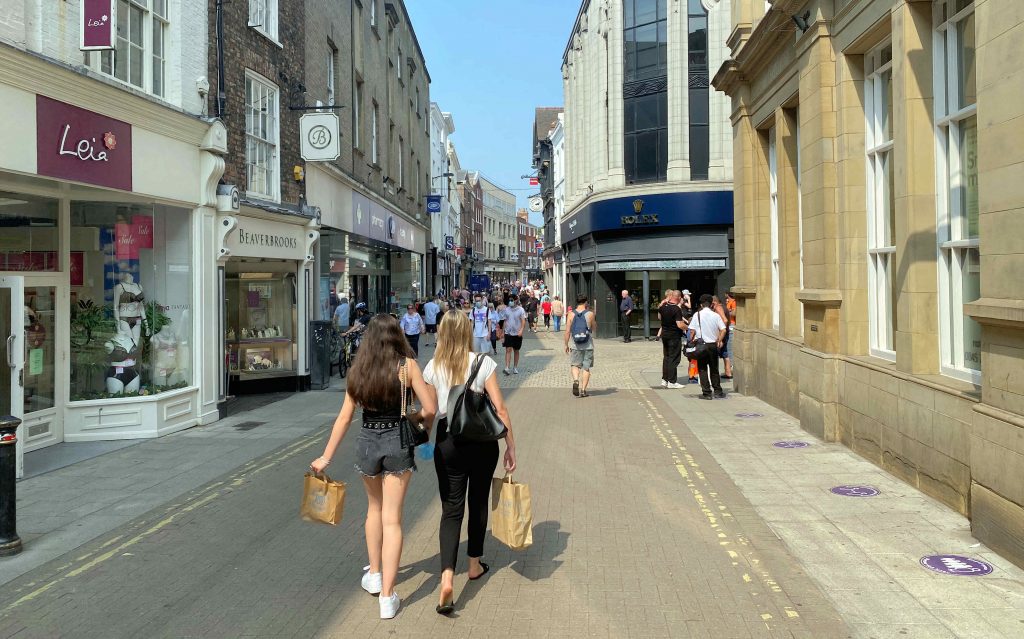
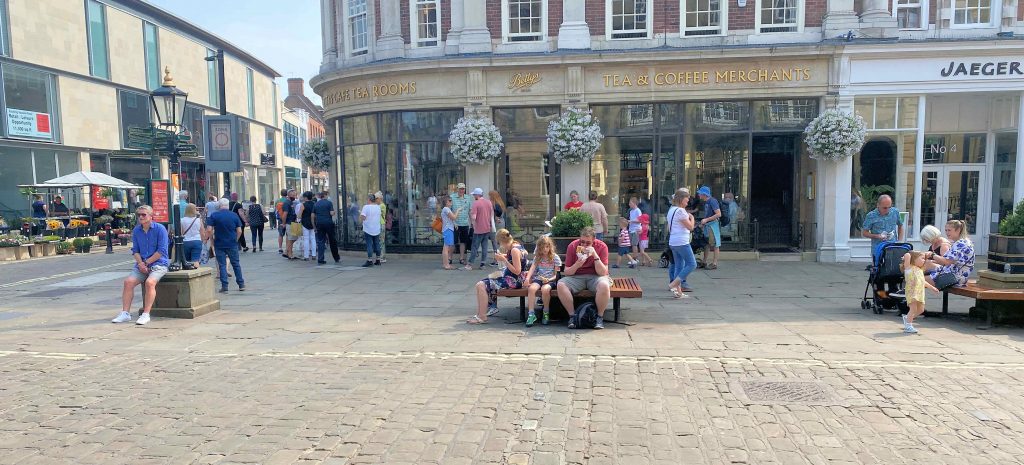
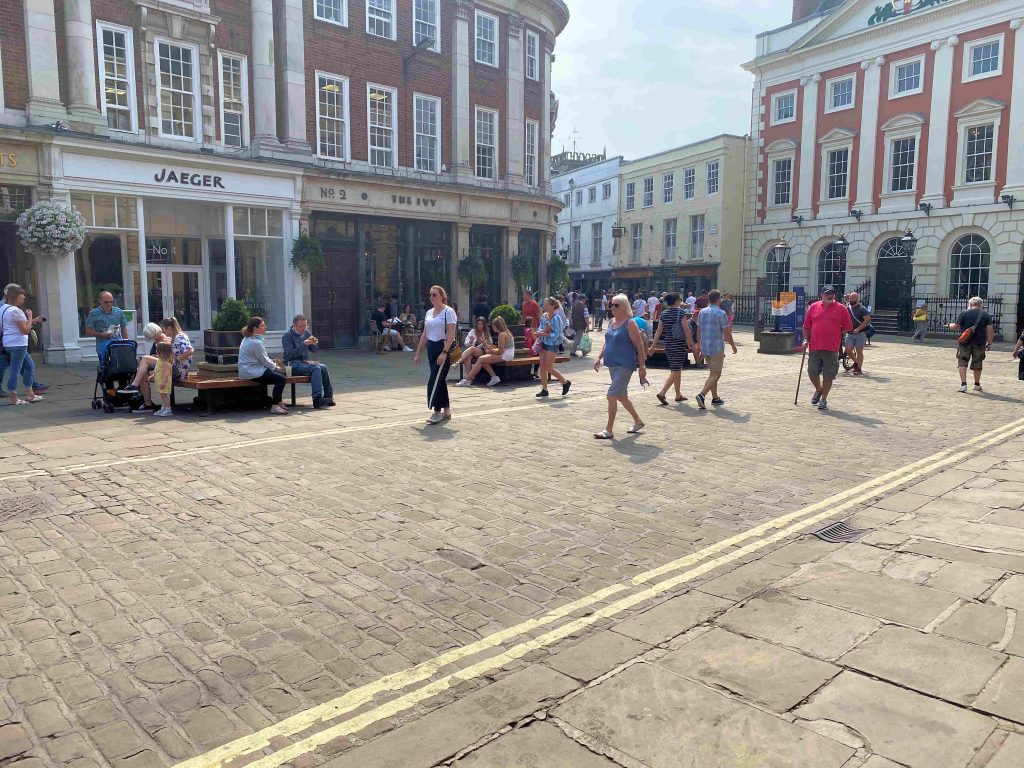
Relatively busy in York today as visitors numbers enjoy a hot weather mid week surge.



A lot is riding on the future of the City centre economy this week as most shops are now reopening. Shopper numbers yesterday were modest – broadly comparable to the numbers that you might have seen on the streets on a Monday in February.
This may step up as the week progresses and residents realise the choice that is available and that car parking space is easy to find (the Council have not discounted parking charges yet).
The reopening of pubs, cafes, libraries and hairdressers – and a loosening of public transport restrictions – would also bring a boost to visitor numbers although such changes are still some time away. It may be even longer before some major visitor and cultural attractions open their doors.
It will also be a few days before “footfall” figures are available (assuming that the cameras have been switched back on).
Generally, “social distancing” was being observed well by those visitors who did venture out. The City centre is clean and uncluttered. Buskers are out and about again but it will require the authorities to commission background entertainment if a “buzz” is to return to the pedestrian areas.
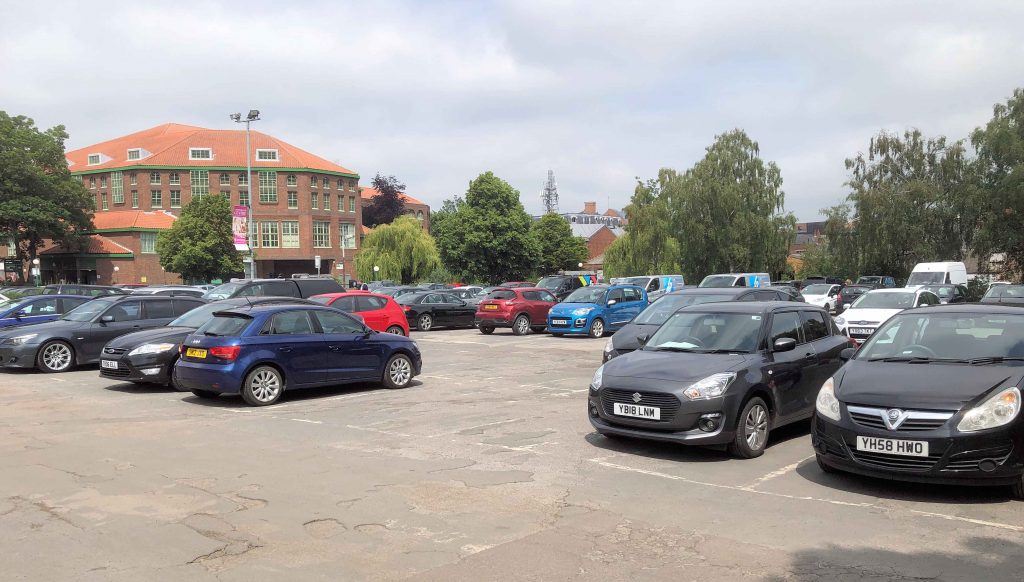
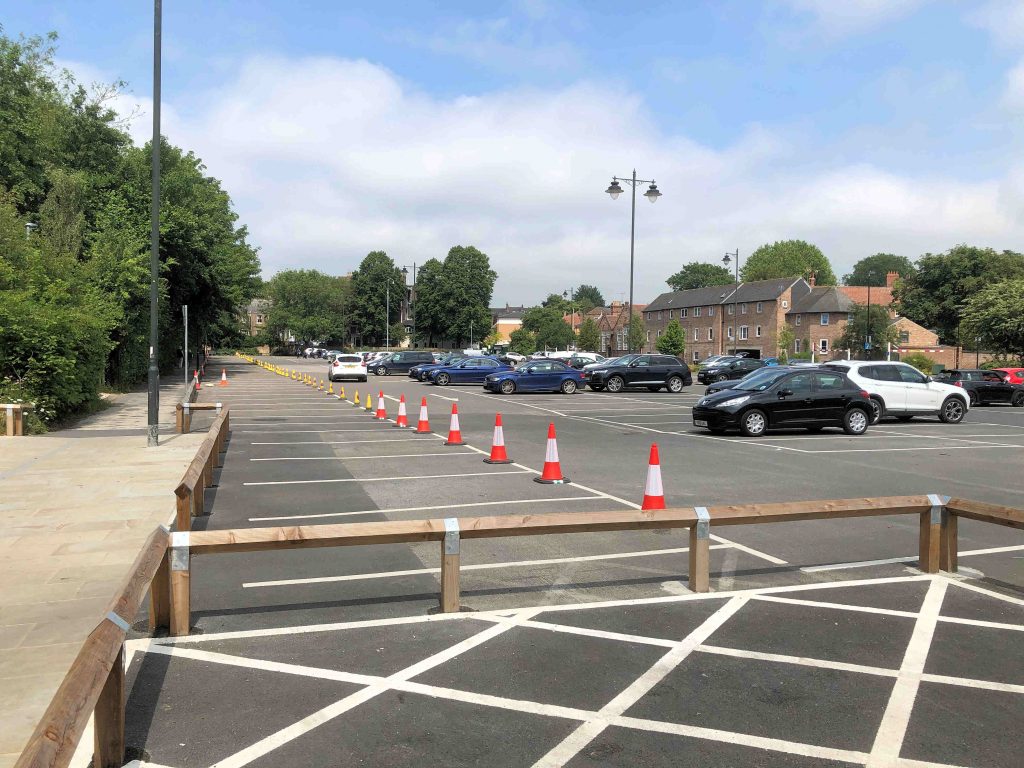
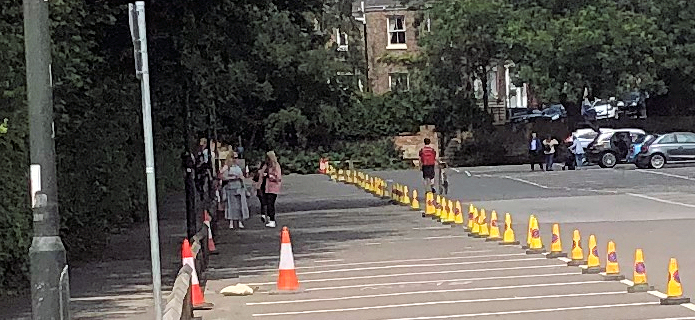
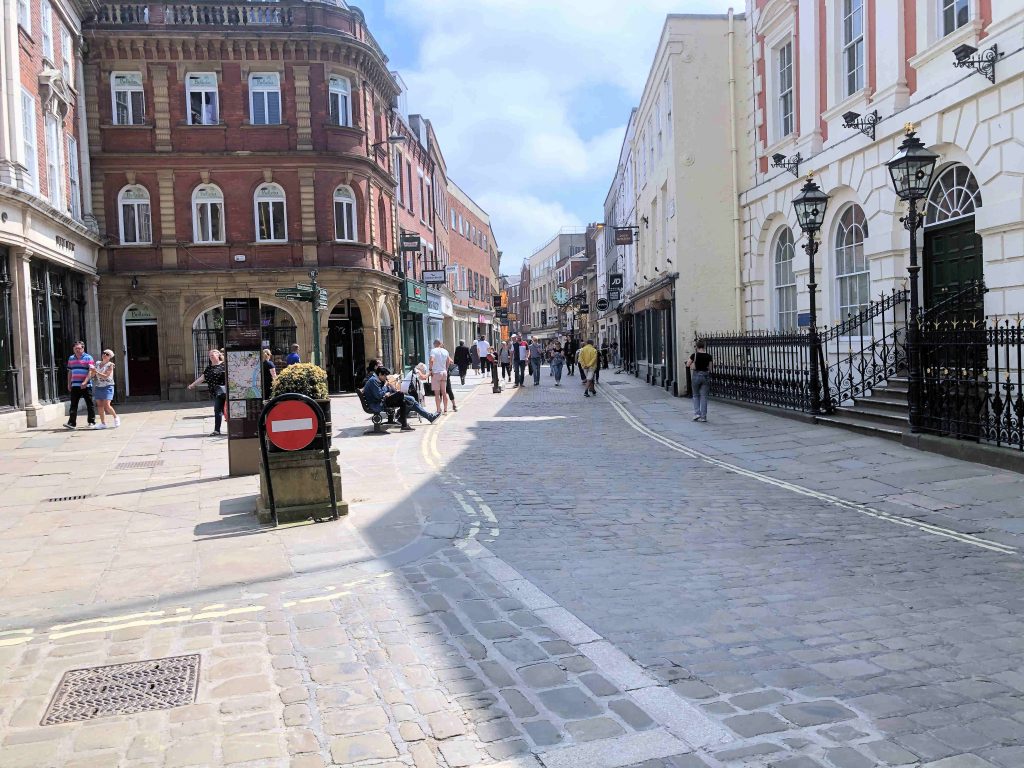
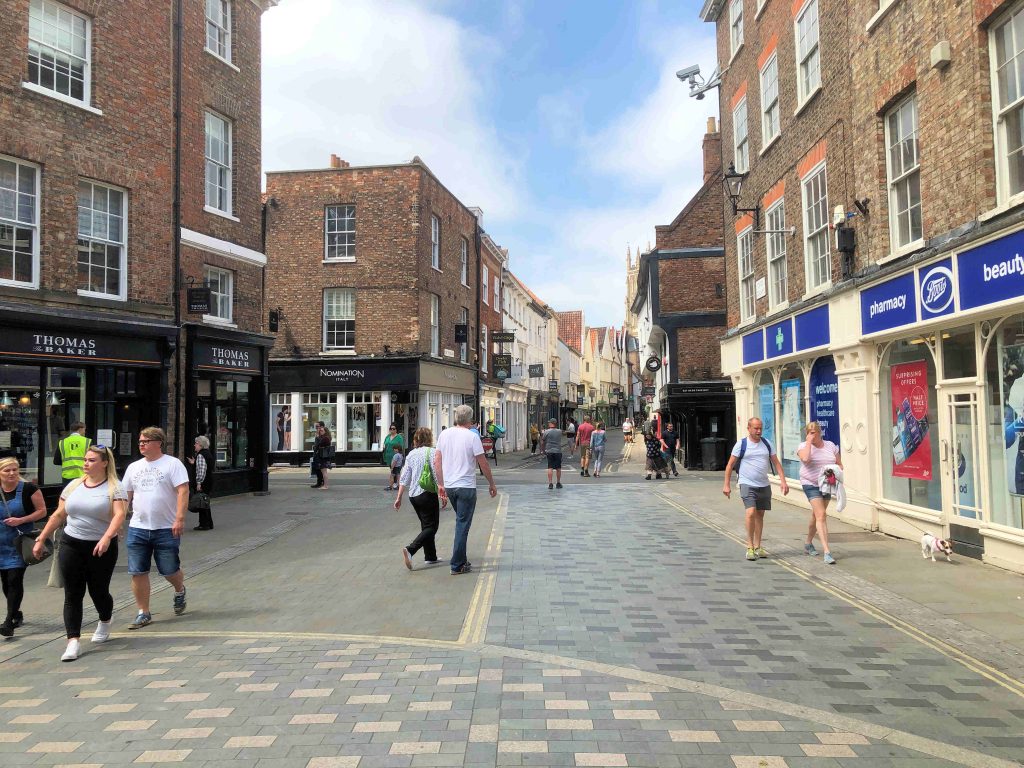
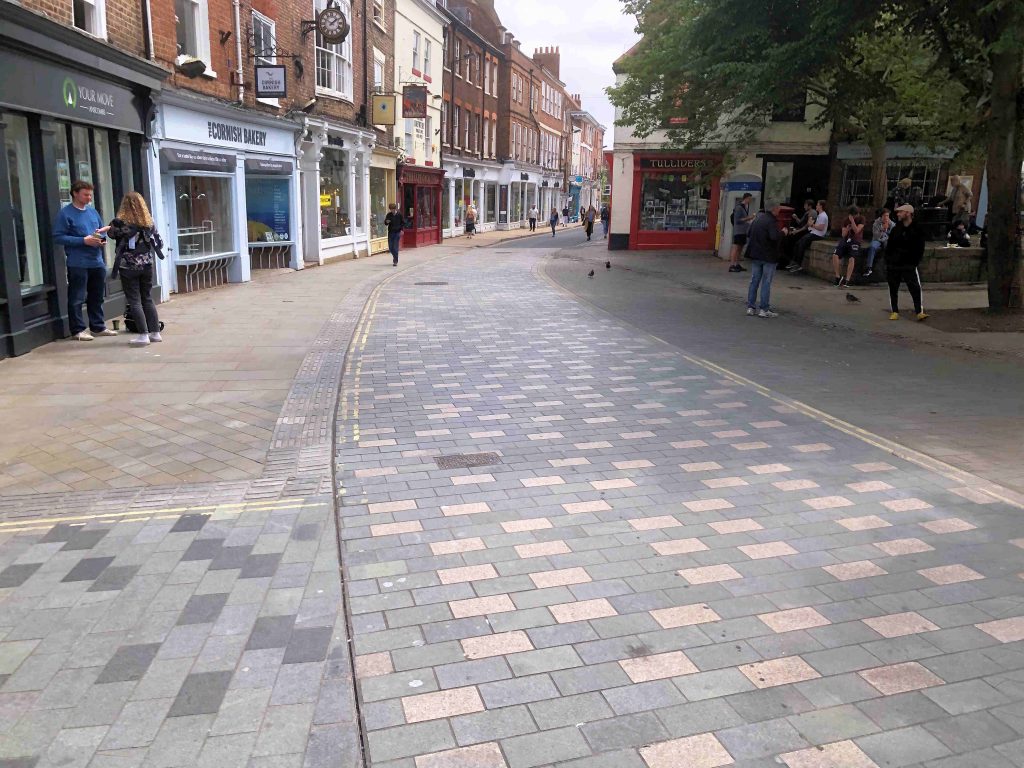
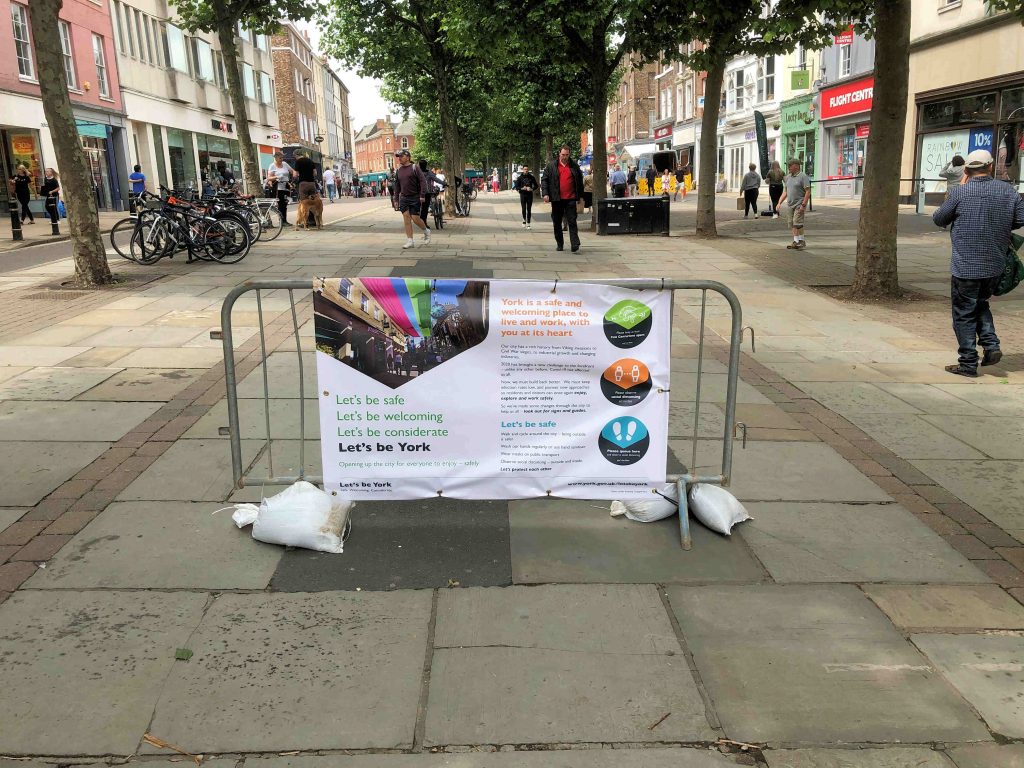
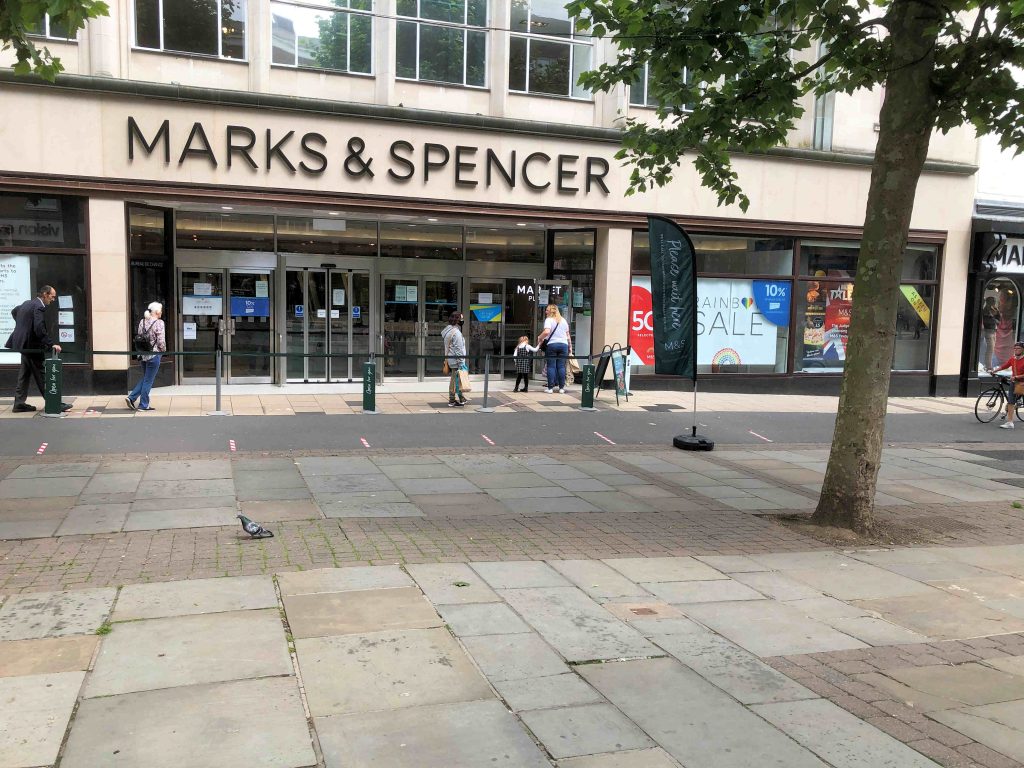
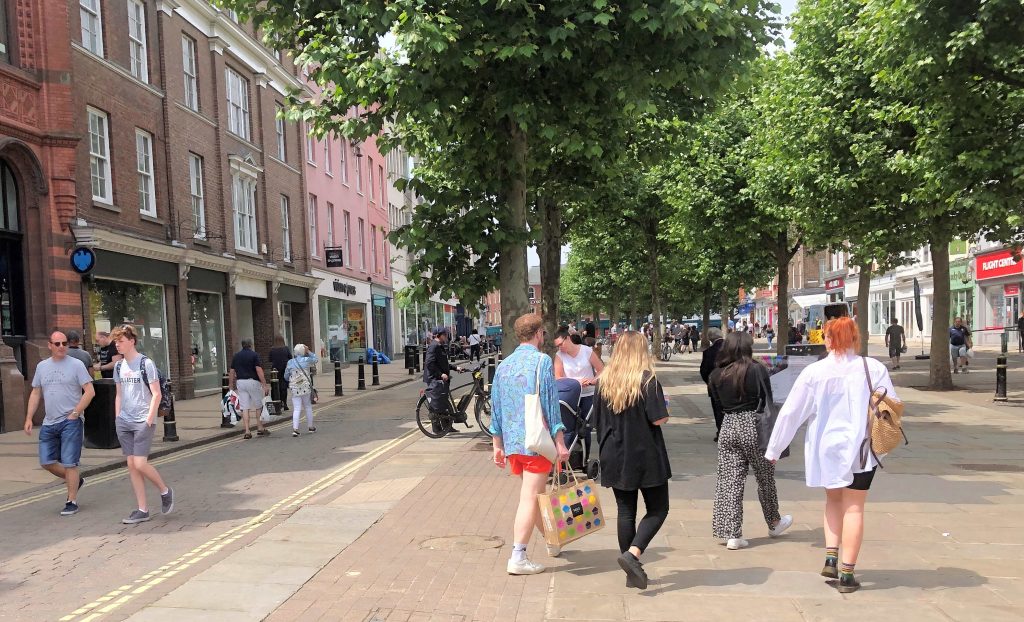
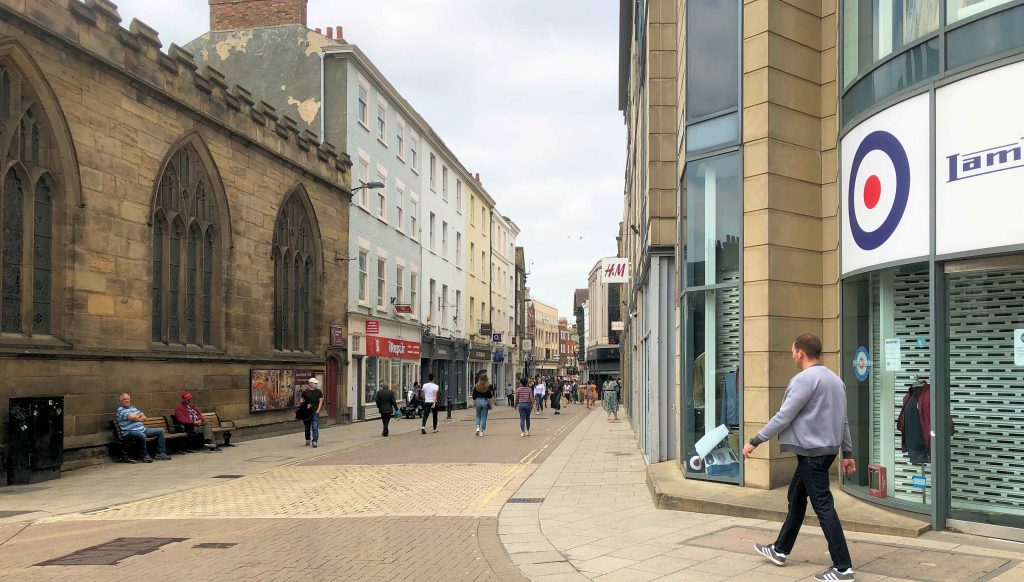
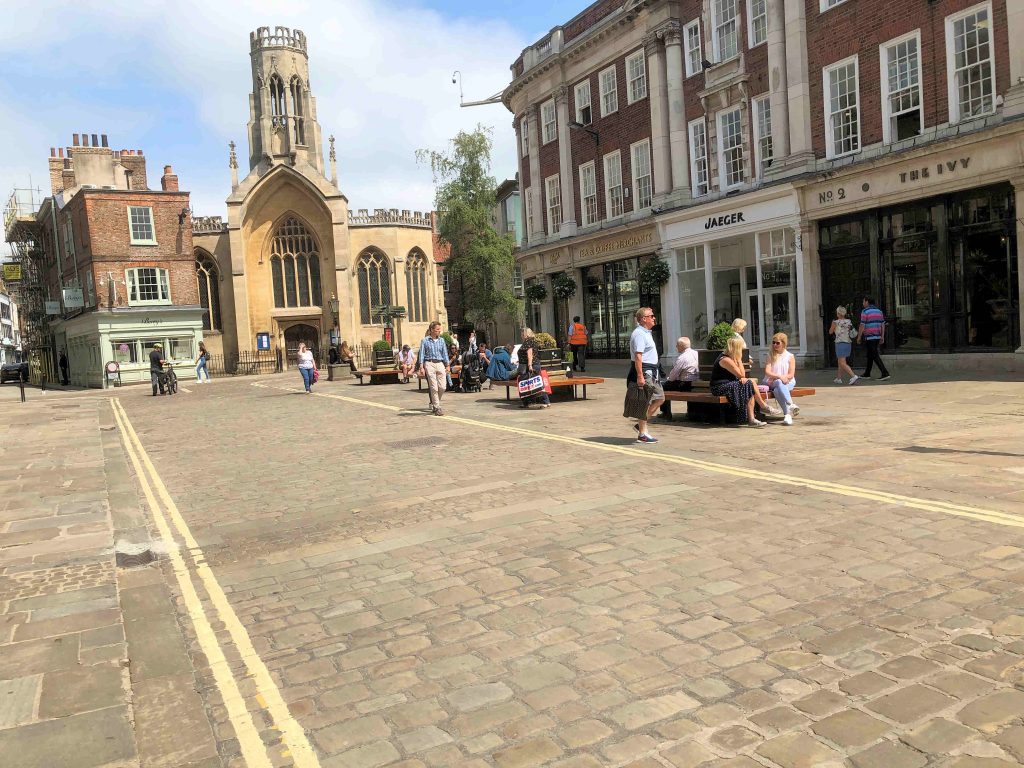
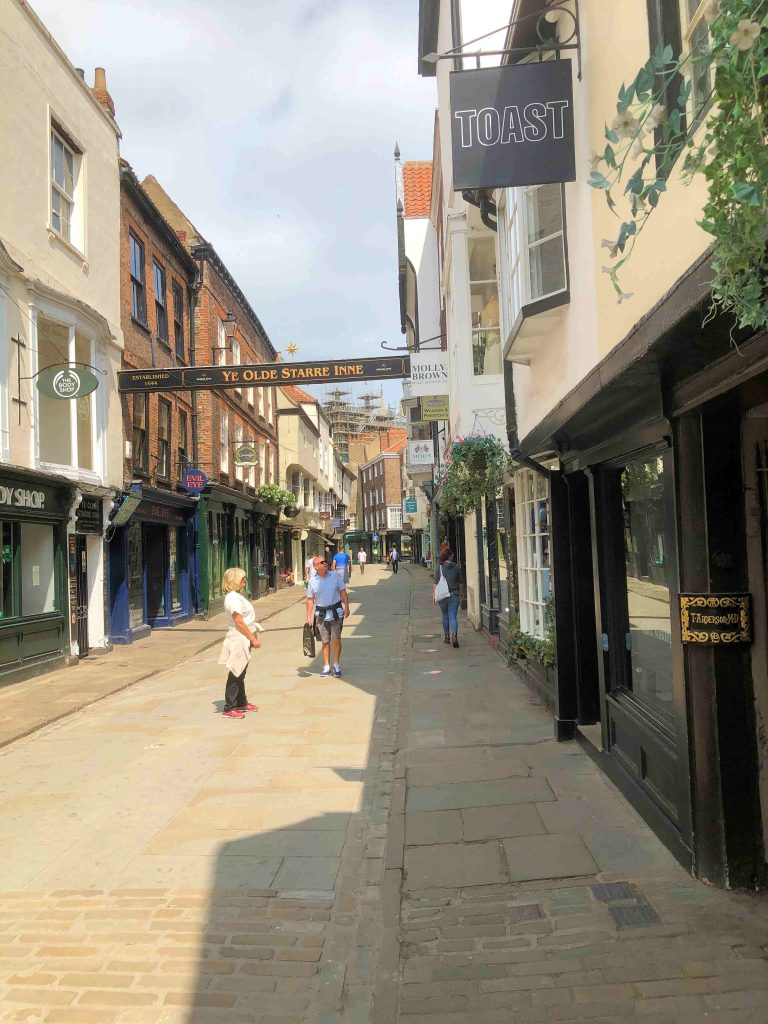
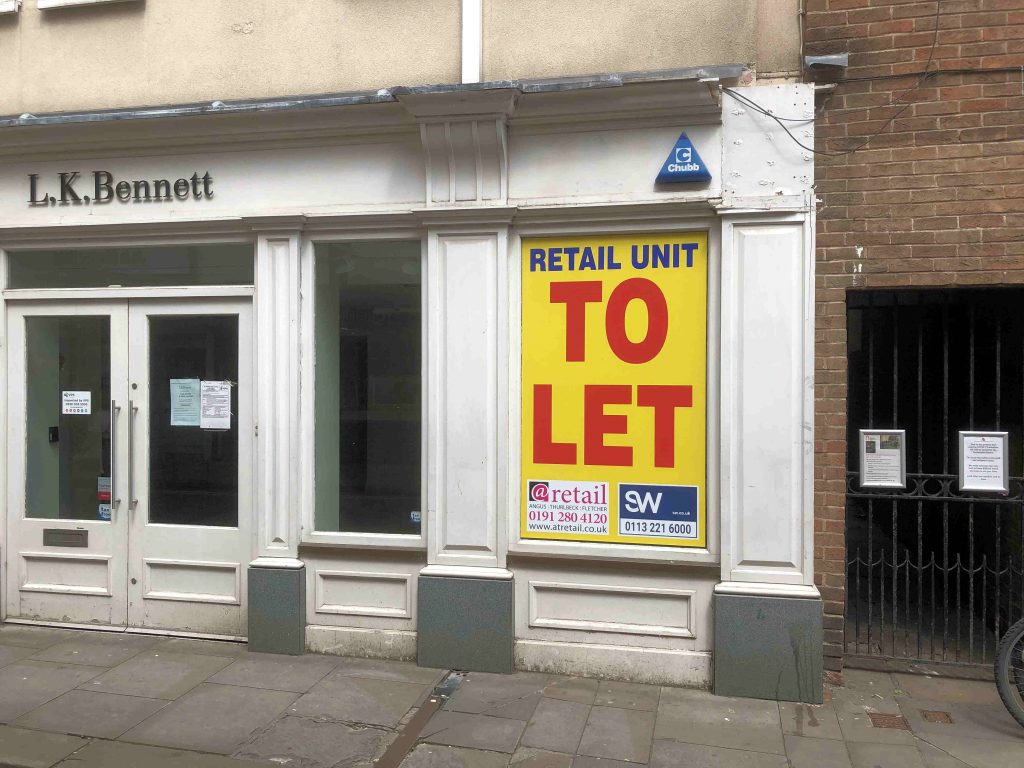
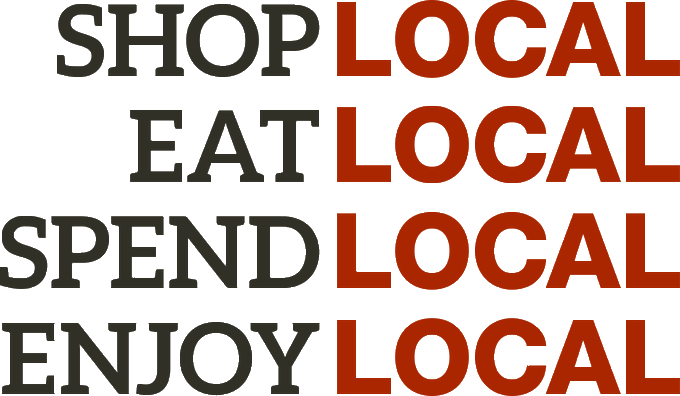
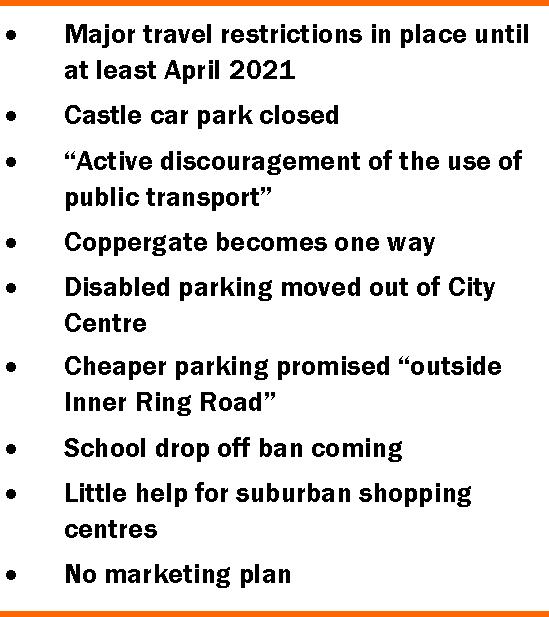
The York Council has published for the first time its post lockdown strategy. The report was considered and agreed today. There was no prior consultation.
The Council has decided to make Coppergate one way (east to west) cutting one of the City’s key bus routes for the next 6 months “or until a vaccine is available”. Cyclists will be able to continue to use the street in both directions although, at the “pinch point” near the Coppergate centre entrance, this may compromise social distancing objectives.
The Council strategy says there will be, ”Active discouragement of the use of public transport and the promotion of walking and cycling”. (Paradoxically the Council has also announced today a bid for funding for more electric buses)
The Council isn’t expecting many retail workers to return to City centre jobs much before December. Restaurant and pub (hospitality) workers may be out of a job for even longer.
More local and county residents are expected to start to visit the City centre from the autumn together with smaller numbers of day visitors from other parts of the region. Later they will be joined by tourists from other parts of the country.
International tourists are not expected to return in any numbers before the late Spring of 2021.

The “strategy” pointedly does not propose a marketing plan aimed at actually promoting the City, and its key visitor/retail economy, over the next few months.
The Council leaders plan involves the closure of the key (for the retail economy) Castle car park without its planned multi storey replacement being opened at St Georges Field.
The notoriously unreliable “pay on exit” mechanisms will also be rolled out to all car parks – negating the social distancing preferred option of contactless payment via smart phone Apps.
The strategy offers little for the suburbs. The option of encouraging devolved open air markets is not even mentioned. There is no publicity support on offer for neighbourhood businesses. More cycle parking is, however, promised.
Many may have sympathy with a key message included in the strategy which “proposes to invest and make bold interventions to create new networks of park and cycle hubs, priority cycle routes, subsidised cycle hire and cycle parking to prioritise active travel”.
Those reading further will see that there are no actions proposed to address the natural barriers to two wheeled transport (poor infrastructure, uneven highways, obstructed paths, etc.) Much less does the statement recognised that some sections of the community because of distance, fitness, luggage or just poor weather, simply don’t have a realistic two wheeled travel option.
No forecasts of modal change are included. The Council simply doesn’t seem to know what effect implementing such a rag bag of tactical polices might have.
So we judge the document to be a profoundly superficial and disappointing proposal shuffled into the light of day with no prior consultation and apparently lacking even sensitivity to the difficult choices now facing many sections of the community.
Hopefully work will have already started on producing something more convincing. First step should be to regain the trust and supportl of local residents.
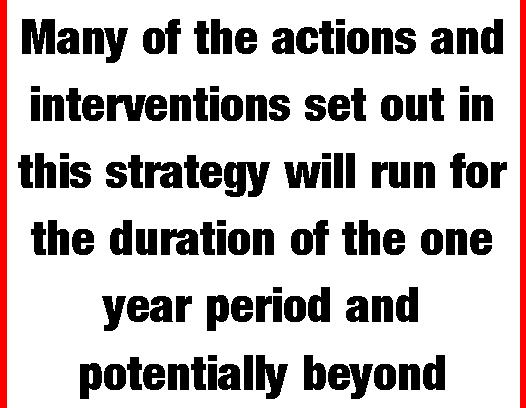
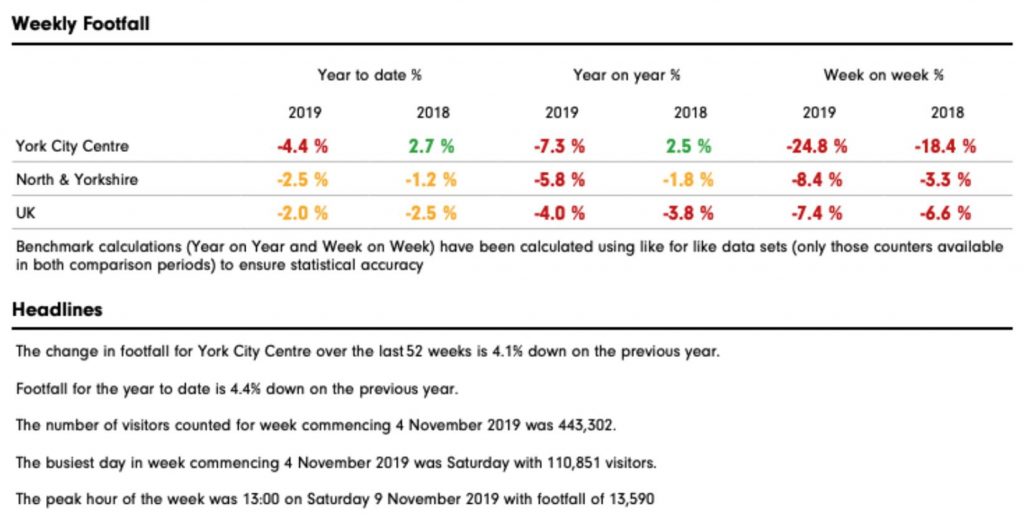
The latest footfall figures for York City centre makes grim reading. The run up to Christmas is usually the busiest time of the year for retailers. With footfall continuing to decline, hopes now rest on the Christmas market stimulating interest.
The York Council is today discussing a report which considers the progress that has been made in implementing recommendations from a review of the “economic health of the City centre”.
Eight recommendations were agreed by the responsible executive Councillor at the beginning of the year. They mostly concern relationships with trade organisations together with the promise that a long-term strategy would be consulted on. The consultation has been dubbed “MyCityCentre”. If it is anything like the Councils MyCastleGateway project, then recovery timescales will be measured in decades rather than years.
A bid to the governments “Future High Streets Fund” has already been turned down.

The only tangible change for customers was the introduction of a “York Gift Card” loyalty scheme. This was launched by the York BID last month. Unfortunately it competes with a plethora of other loyalty cards – including those run by the York Museums Trust, York Libraries and the Theatre Royal – as well as the, better established, York Pass, for the attention of visitors.
Some joined up thinking wouldn’t go amiss.
The report says that evening park and ride service times have now been made permanent.
Meanwhile the number of shops closing in the City centre is increasing. Debenhams, Bonmarche, French Connection, LK Bennett, Crabtree & Evelyn, Gap, Dorothy Perkins and Burton have, or will shortly, close. They join dozens of others including iconic York brands like Scotts, Hunter and Smallpage, House and Son, Sarah Coggles, Russell’s and Mulberry Hall; all lost during the last decade.
Against that background of collateral damage, it is surprising that the Council could only come up with eight palliatives. In fairness, though, it can do little about the biggest influence – internet shopping.
The shop closure trend is not even mentioned in the Council report.
It is ironic that some politicians are jumping on a bandwagon promoted by access difficulties for some market traders over the Christmas period. They will be unable to close their stalls. remove goods and exit the city before 5:00pm.
Their landlords, the “Make it York” QUANGO, claim that vehicles cannot safely leave the market area before 8:00pm.
Some might think, in any event, that the high footfall brought by the Christmas Market would be something to be exploited. Empty stalls are a “turn off” for customers.
Nevertheless “Make it York” has acquired a poor reputation for consultation and flexibility during its relatively short lifespan.
It would do well to find a compromise.